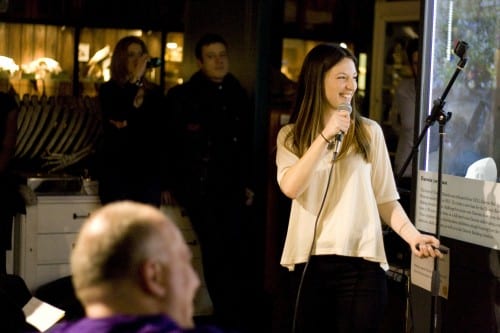London’s Biodiversity Health Check
By Dean W Veall, on 26 February 2015
Dean Veall here, we are getting ready for tonight’s Focus on the Positive event where we will be giving away £2,000 to a researcher here at UCL. They will pitch to the audience their project who will then vote to decide which project, related to their research, becomes a reality. Alison Fairbrass was a runner-up at a previous event and has written about how she spent her £1,000 prize giving London Biodiversity a health check.
I was very nervous about entering the Focus on the Positive (FotP) competition. I had experience presenting at conferences, but thanks to my FoP training I learnt that pitching would be very different to presenting.
I had to identify who my audience would be, and ‘sell’ the project to them for votes. I had to consider what would be of importance to my audience, and convince them that my project would be of benefit to them.
My project was about monitoring the biodiversity in London to understand the health of the city’s ecosystem. I had two points I could draw on for the pitch:
- The audience would be from London so they were likely to be interested in the health of the city they live in.
- Due to the location of the competition in the Grant Museum of Zoology I suspected there would be a fair number of nature lovers in the audience.
The FotP competition was a really fun event to be a part of, and the Grant Museum was a really excellent location. Four projects were given 5-minutes each to pitch for funding to support their project. In my pitch I explained that the project was in its second year of monitoring London’s green spaces using acoustic detectors to record all the wildlife in the city that make sounds, including birds, bat and insects.
I explained that the funding was required to conduct the acoustic surveys during the summer 2014 and that we planned to place detectors in green spaces across the entire city. I was delighted to win the runner-up prize of £1000 for the project.
We began the acoustic biodiversity surveys in May and finished in September and surveyed 24 locations across the city. This included green roofs in London Bridge and Victoria to churchyards in Romford and Kew. At each location acoustic detectors were deployed for 7 days recording all the sounds emitted by wildlife during that time.
Initially we planned to survey many different types of green space, but as we started planning our survey strategy we realised that was a bit overambitious.
Instead we decided to narrow down our investigation to two very contrasting types of green space: churchyards and green roofs. We hoped this would give us a good picture of the wildlife inhabiting both old, well-established green space (churchyards) and newer, constructed green spaces (green roofs).
Many people were involved in helping us gain access to green space sites in London where we could conduct our surveys. The Diocese of London and the various people who run the churches in London gave us access to their churchyards and kept many eyes on our equipment.
When finding green roofs to survey, we were contacted by a number of green roof owners after advertising the project on a London biodiversity forum. This included park rangers at Ealing council, researchers at the University of East London, and members of the Greater London Authority. In addition, a green roof company, Organic Roofs, connected us with their client base in London. In total we surveyed 10 churchyards and 14 green roofs in London spanning all six zones of the London transport network
The results of our surveys have complemented other ecological surveys done by the Diocese of London, by informing them on the bat and bird species that use the churchyards in London. The biodiversity we recorded on several of the churchyards was very high which illustrates the potential diversity that these green spaces can support.
The Diocese of London are using these results to inform the way churchyards are managed in London to maximise the potential benefits that they can provide for London wildlife.
The green roof owners are incredibly interested in the biodiversity that is supported by their roofs, as all have made considerable time and financial investments in creating new wildlife habitat on their buildings. The results of our surveys have revealed to them the biodiversity that is supported by their green roofs. Many were pleasantly surprised by the amount of wildlife we recorded, I think several of them have been encouraged to add additional biodiversity-friendly features to their roofs because to the results of the surveys.
The broader aim of the project was to get a picture of the health of London’s ecosystem. We still have a lot of work to do to process the data we collected through the project in order to answer our questions about the wildlife that we share the city with. But thanks to the funding we received from Focus on the Positive the data we collected should provide us with some very interesting and robust results.
Alison is a PhD student in the UCL Centre in Urban Sustainability & Resilience and in collaboration with the Bat Conservation Trust.
This blog originally appeared on the Focus on the Positive blog in December 2014
 Close
Close




